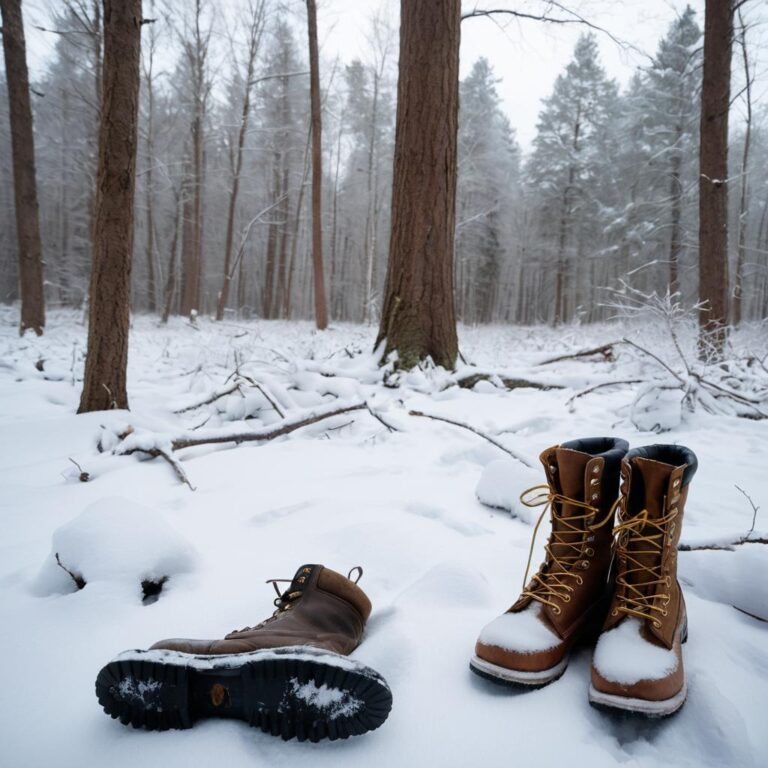
Treasures of the Past: 2,000-Year-Old Silver Coin Haul Unearthed in Sicily’s Hidden Cove
The sun was shining brightly over the island of Pantelleria, a tiny gem off the southern coast of Italy, as a team of archaeologists led by Thomas Schäfer from the University of Tübingen in Germany made history. For centuries, the Acropolis of Santa Teresa and San Marco, a historic landmark on the island, had been shrouded in mystery, its secrets hidden beneath layers of soil and rock. But on this fateful day, the team’s meticulous excavation uncovered 27 ancient silver coins, hidden away for over 2,000 years.
The discovery is a testament to the enduring allure of archaeology, a field that continues to captivate our imagination with its tales of forgotten civilizations and lost treasures. As we delve into the story behind this remarkable find, it becomes clear that this latest haul is not just a relic of the past but also a window into the complex world of ancient Rome.
The coins themselves are denarii, the main silver coin used in ancient Rome for several centuries after its introduction around 200 B.C. They date back to between 94 B.C. and 74 B.C., a time when the Roman Republic was at the height of its power, with a vast empire stretching from Britain to Egypt. These coins would have been used as currency in trade transactions, paying for everything from olive oil to fine silks.
The significance of this discovery cannot be overstated. As Dr. Schäfer explained, “This find is a major breakthrough in our understanding of the Roman Republic and its economy during that period.” The coins provide valuable insights into the commercial networks that existed at the time, revealing the intricate web of trade relationships between ancient cities and civilizations.
But this discovery also raises questions about the context in which these coins were hidden. According to officials, the team initially spotted some of the coins by chance in soil that had loosened after a period of rain. They then dug beneath a rock to uncover the rest of the haul. The fact that these coins were hidden away suggests that they may have been intentionally buried during an invasion of the island by pirates, which happened often in ancient times.
This theory is supported by the discovery’s proximity to the Acropolis of Santa Teresa and San Marco, a strategic location that would have offered protection from invaders. It’s possible that the coins were hidden as part of a larger cache, never to be recovered because so much of the acropolis remained untouched for centuries.
This latest find is not an isolated incident on Pantelleria. In 2010, a trove of similar silver Roman coins dating back to roughly the same time period was discovered at the same site. That haul included 107 coins, providing further evidence of the island’s rich history and its importance as a hub of ancient trade.
A few years before that, excavations near those sites led to the discovery of three marble sculptures depicting former Roman emperors and prominent female figures in ancient Rome. These finds have shed new light on the artistic and cultural achievements of the ancient world, demonstrating the high level of sophistication that existed during this period.
The newest discovery on Pantelleria is a valuable addition to our knowledge of the ancient world, providing insights into the politics and commerce of the Mediterranean during the Roman Republic era. As we continue to excavate the secrets of the past, it’s clear that this latest find will have far-reaching implications for historians and archaeologists alike.
“This discovery opens up new avenues for research,” said Dr. Schäfer. “We can now piece together a more accurate picture of life in ancient Rome, its economy, politics, and culture. This is an exciting time for archaeology, and we are thrilled to be a part of it.”
As the world waits with bated breath for further discoveries on Pantelleria, one thing is certain: this 2,000-year-old silver coin haul has left us with more questions than answers. But that’s what makes archaeology so fascinating – the thrill of the unknown, the promise of secrets yet to be uncovered.
As we look to the future, it’s clear that discoveries like these will continue to shape our understanding of ancient civilizations and their role in shaping the modern world. The allure of Pantelleria remains strong, its hidden coves and ancient ruins beckoning us to uncover more secrets of the past. And as we delve deeper into the mysteries of this tiny island, it’s clear that the treasures of the past will continue to captivate our imagination for generations to come.
A New Era in Archaeology
The discovery on Pantelleria marks a new era in archaeology, one characterized by cutting-edge technology and meticulous excavation techniques. Dr. Schäfer’s team employed advanced scanning technology to locate the coins beneath the rock, highlighting the importance of collaboration between archaeologists, historians, and technologists.
As we look to the future, it’s clear that discoveries like this will continue to push the boundaries of our knowledge about ancient civilizations. With the help of advances in technology, archaeologists are now able to uncover secrets that were previously inaccessible.
“We’re entering a new era of archaeological excavation,” said Dr. Schäfer. “With advanced scanning technologies and cutting-edge techniques, we’re able to locate and excavate sites more accurately than ever before.”
This latest find is a testament to the power of interdisciplinary collaboration in archaeology. By combining expertise from various fields, researchers are now able to reconstruct the past with greater precision.
“This discovery shows that archaeology is not just about digging up old artifacts,” said Dr. Schäfer. “It’s about understanding the people and societies that created them, their cultures, politics, and economies.”
As we continue to explore the secrets of Pantelleria, it’s clear that this island will remain a hub of archaeological activity for years to come. With its rich history and hidden ruins, Pantelleria offers a unique glimpse into ancient Rome’s past.
The Future of Archaeology
The discovery on Pantelleria marks a new era in archaeology, one characterized by collaboration between researchers from various disciplines. As we continue to excavate the secrets of the past, it’s clear that this approach will yield more accurate and nuanced insights into ancient civilizations.
“We’re entering an exciting time for archaeology,” said Dr. Schäfer. “With advances in technology and new excavation techniques, we’re able to uncover secrets that were previously inaccessible.”
As we look to the future, it’s clear that discoveries like these will continue to push the boundaries of our knowledge about ancient civilizations. With the help of advances in technology, archaeologists are now able to reconstruct the past with greater precision.
“This discovery shows that archaeology is not just about digging up old artifacts,” said Dr. Schäfer. “It’s about understanding the people and societies that created them, their cultures, politics, and economies.”
As we continue to explore the secrets of Pantelleria, it’s clear that this island will remain a hub of archaeological activity for years to come. With its rich history and hidden ruins, Pantelleria offers a unique glimpse into ancient Rome’s past.
Conclusion
The discovery on Pantelleria is a testament to the power of archaeology in shedding light on the secrets of the past. As we continue to excavate the site, it’s clear that this island will remain a hub of archaeological activity for years to come.
With its rich history and hidden ruins, Pantelleria offers a unique glimpse into ancient Rome’s past. This latest find is a valuable addition to our knowledge of the Roman Republic era, providing insights into the politics and commerce of the Mediterranean during this time.
As we look to the future, it’s clear that discoveries like these will continue to push the boundaries of our knowledge about ancient civilizations. With the help of advances in technology, archaeologists are now able to reconstruct the past with greater precision.
“The discovery on Pantelleria is a major breakthrough in our understanding of the Roman Republic,” said Dr. Schäfer. “We’re excited to see where this discovery will take us next.”
As we continue to explore the secrets of the past, it’s clear that archaeology has an exciting future ahead of it. With advances in technology and new excavation techniques, researchers are now able to uncover secrets that were previously inaccessible.
This latest find is a testament to the power of interdisciplinary collaboration in archaeology. By combining expertise from various fields, researchers are now able to reconstruct the past with greater precision.
As we look to the future, it’s clear that discoveries like these will continue to shape our understanding of ancient civilizations and their role in shaping the modern world. The allure of Pantelleria remains strong, its hidden coves and ancient ruins beckoning us to uncover more secrets of the past. And as we delve deeper into the mysteries of this tiny island, it’s clear that the treasures of the past will continue to captivate our imagination for generations to come.






As I read about the 2,000-year-old silver coin haul unearthed in Sicily’s hidden cove, I couldn’t help but feel a sense of awe and wonder at the secrets that lie beneath the surface. The fact that these coins were hidden away for so long, only to be discovered now through the meticulous excavation work of Dr. Schäfer and his team, is a testament to the enduring allure of archaeology. And as I ponder the significance of this find, I am left with more questions than answers – what other secrets lie hidden on Pantelleria, waiting to be uncovered by future generations of archaeologists?
As I gaze out at the rain-soaked streets of Portland, my mind wanders back to the ancient silver coins unearthed on Pantelleria. The 2,000-year-old denarii, once used as currency in trade transactions, now lie hidden beneath layers of soil and rock, waiting for us to uncover their secrets.
What if these coins were not just random relics of the past, but rather a window into the complex world of ancient Rome? A glimpse into a time when the Roman Republic was at the height of its power, with a vast empire stretching from Britain to Egypt.
As I ponder this question, I am reminded of the bomb cyclone that swept through our region yesterday, bringing rain and snow in its wake. The ferocity of nature’s fury is a stark contrast to the slow and deliberate pace of archaeological excavation.
And yet, it is precisely this meticulous approach that has allowed us to uncover secrets that were previously inaccessible. The discovery on Pantelleria is a testament to the power of interdisciplinary collaboration in archaeology, where experts from various fields come together to reconstruct the past with greater precision.
But what lies ahead for archaeology? Will we continue to uncover secrets that were once hidden beneath layers of soil and rock? Or will we discover new methods of excavation that allow us to probe even deeper into the mysteries of the past?
As I stand at the edge of the storm, listening to the rain pound against my skin, I am filled with a sense of wonder and awe. The treasures of the past are out there, waiting for us to uncover them. And as we delve deeper into the secrets of Pantelleria, it is clear that the allure of this tiny island will continue to captivate our imagination for generations to come.
ARE YOU KIDDING ME?! You’re celebrating some old coins while people’s pets are dying from bird flu in raw pet food? What’s more valuable: a bunch of ancient relics or the life of a living being?!
It’s ironic that a story about 2,000-year-old silver coins has me thinking about tonight’s Golden Globes ceremony. As I watch the glamorous attendees walking down the red carpet, I wonder if they’re aware of how fleeting fame can be. These Roman coins have endured for centuries, while Hollywood stars come and go in an instant.
I’m a historian, not an archaeologist, but even I know that discoveries like this are more than just ancient relics – they’re windows into the past, revealing the complexities of societies long gone. The fact that these coins were hidden away suggests a story of survival, perhaps even desperation, during a time of conflict and invasion.
It makes me think about the parallels between then and now. Are we hiding our own secrets, our own stories of struggle and resilience? Will they be uncovered someday, leaving us with more questions than answers, just like this discovery on Pantelleria?
I’ll have to ask Dr. Schäfer if he thinks his team will uncover any more secrets like this in the future. Until then, I’ll be watching the Golden Globes, marveling at the beauty and glamour of it all – while wondering what other stories lie hidden beneath our feet.
As I read about the 2,000-year-old silver coin haul unearthed in Sicily’s hidden cove, I couldn’t help but feel a sense of awe at the secrets that lie beneath our feet. This article reminds me that archaeology is not just about digging up old artifacts, but about understanding the people and societies that created them. It’s a testament to the enduring allure of human connection across time and space.
As I reflect on this discovery, I’m reminded of the parallels between ancient civilizations and our own world today. Just as the Roman Republic was built on trade relationships and complex networks, so too are we connected in our modern world through technology and global commerce.
But what if we were to apply these same principles of connection and collaboration to the field of archaeology itself? What if we were to bring together experts from various fields – historians, technologists, and anthropologists – to excavate the secrets of the past?
It’s a thought that sends shivers down my spine. Imagine being part of a team that uncovers new insights into ancient civilizations, shedding light on the mysteries of human history. It’s a prospect that fills me with excitement and wonder.
So, what do you think? Should we be exploring new ways to connect archaeology with technology and other fields of study? Can we use these advances in collaboration to unlock even more secrets of the past? I’d love to hear your thoughts on this!
just because you’ve read a few books on the subject doesn’t mean you’re qualified to write about it. I mean, have you even done any actual excavation work? I doubt it.
And let’s not forget the obligatory quote from Dr. Schäfer, who is somehow an expert in archaeology despite being a German from Tübingen. I’m sure his PhD thesis was titled “The Importance of Silver Coins in Ancient Rome” or something equally as profound.
But hey, at least we get to hear about the advanced scanning technology and cutting-edge excavation techniques that were used to uncover these coins. Because, you know, that’s what really matters in archaeology: the tools you use to dig up old artifacts, not the actual artifacts themselves.
And finally, let’s talk about the “new era” of archaeology that this discovery supposedly marks. Please, we’ve been hearing about how archaeology is entering a new era for decades now. I mean, what’s next? Are they going to tell us that archaeology is now a science?
In conclusion, this article is just a shallow attempt at sounding like an expert in archaeology while actually knowing nothing about the subject. But hey, at least it’s entertaining to watch someone try to sound intelligent while being completely clueless.
And to answer your question: what’s next for archaeology? Well, I’m sure we’ll see more of the same old nonsense: shallow articles about “major breakthroughs” and “new eras” in archaeology. But hey, at least it’s fun to watch.
I’d agree that microplastics are a real concern for brain health, but let’s not forget that the impact of microplastics on human cognition is still largely theoretical and in need of more research. That being said, I do think it’s fascinating how archaeology can uncover clues about our ancient past – like this recent discovery of 2,000-year-old silver coins on Pantelleria, which sheds new light on ancient Rome’s politics and commerce. The use of advanced scanning technology to locate the coins is a testament to the power of interdisciplinary collaboration in archaeology.